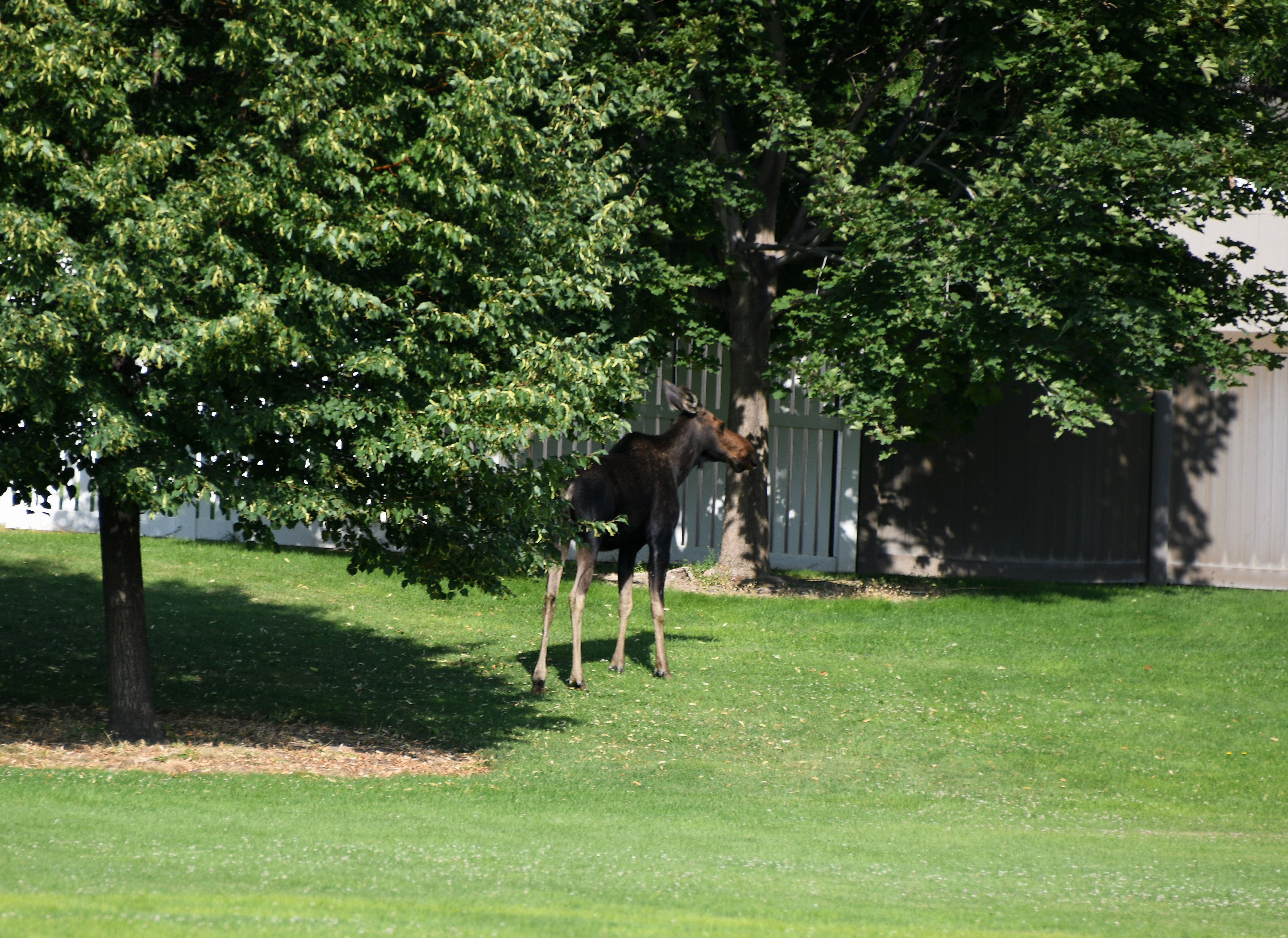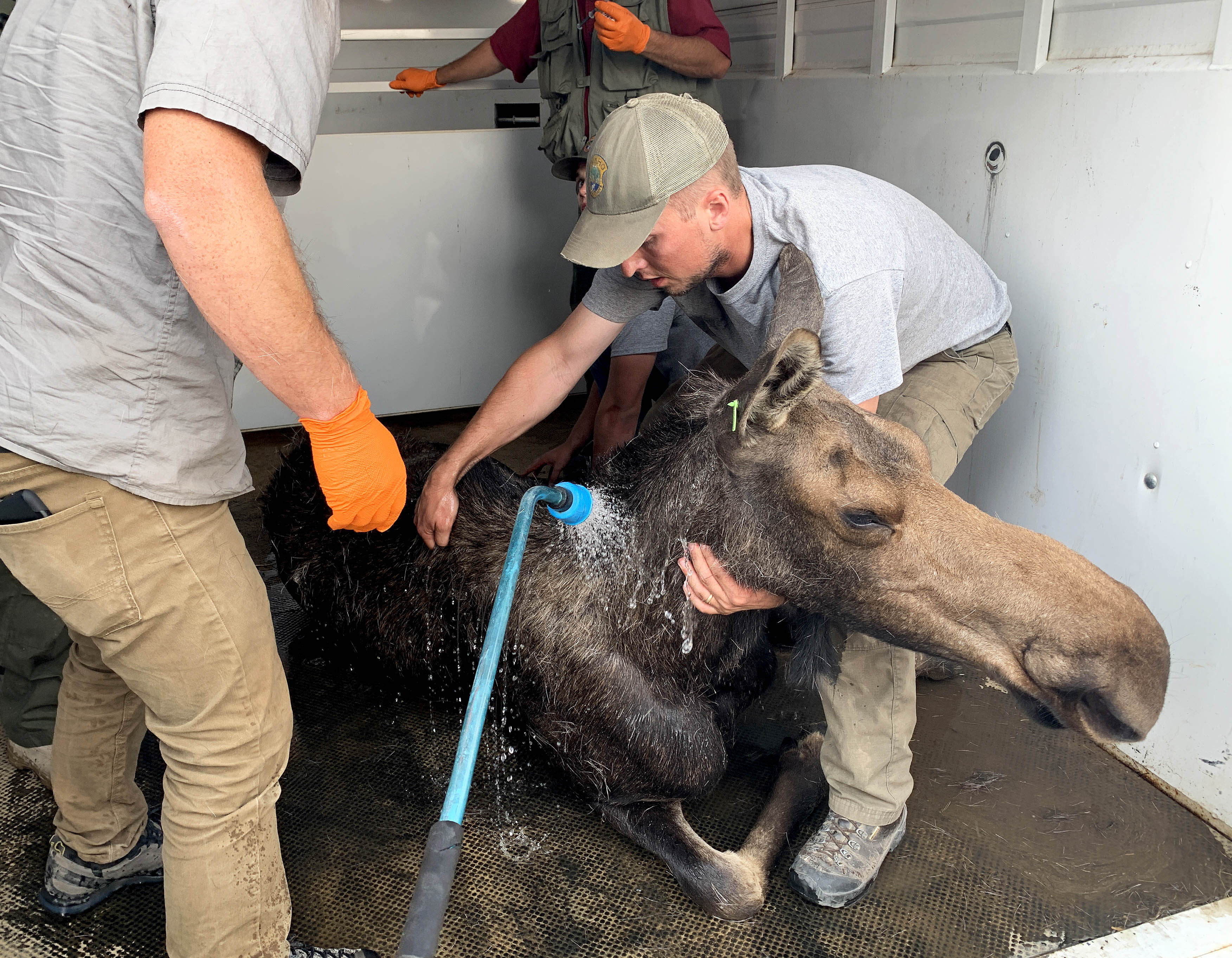In Idaho, as spring turns to summer moose, especially yearling animals begin to wander in search of new territory that will provide them with luscious food sources and cool water.
South-central Idaho has robust moose populations, especially in the South Hills near Twin Falls and other southern Idaho mountain ranges. Because of this, it’s not uncommon for Fish and Game to receive reports of yearling moose roaming outside of their typical environments. Often these walk-abouts bring moose into agricultural areas and sometimes even venturing into local communities and residential areas.
In just the last few weeks, Fish and Game biologists in the Magic Valley Region have already started to receive reports of yearling moose on the move in southern Idaho.



